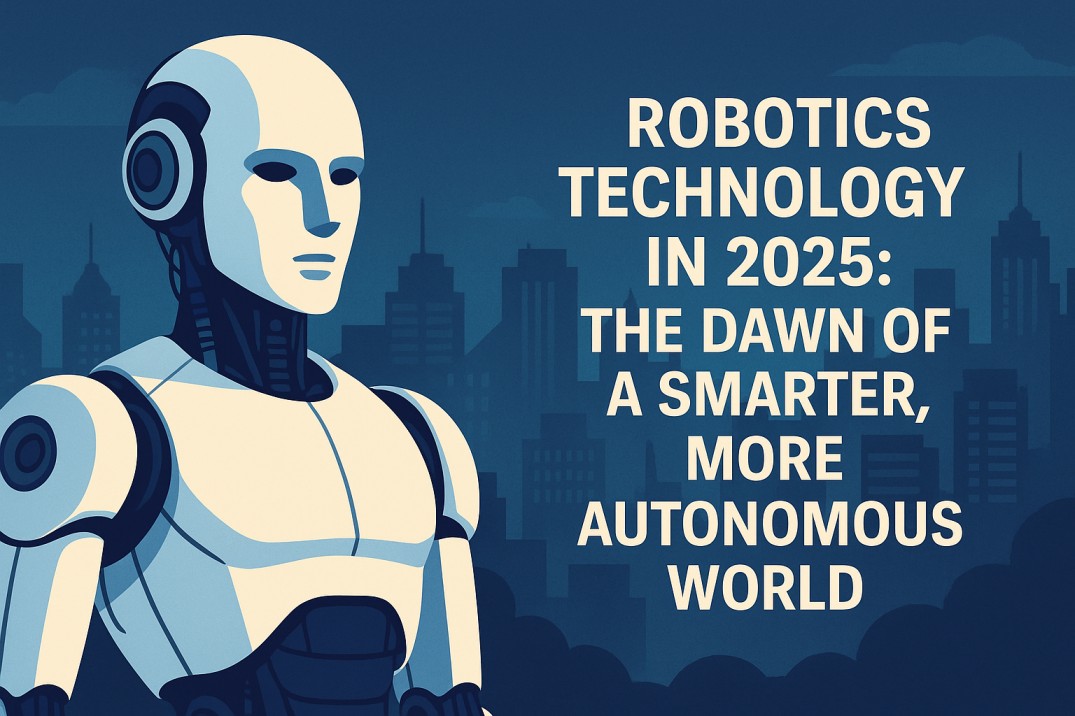As we move through 2025, we’re witnessing an unprecedented acceleration in robotics technology that’s reshaping our world. From warehouses to hospitals, from farms to our own living rooms, robots are becoming more intelligent, capable, and integrated into daily life than ever before.
AI-Powered Autonomous Systems Lead the Way
The integration of advanced AI with robotics has created machines that don’t just follow pre-programmed instructions but can learn, adapt, and make decisions independently. The latest generation of robots leverage multi-modal large language models (LLMs), enabling them to understand complex environments through vision, touch, and natural language.
Industry leaders like Boston Dynamics, Nvidia, and Anthropic have collaborated to develop frameworks allowing robots to interpret and navigate the physical world with unprecedented understanding. Self-improving algorithms mean these machines get better with every interaction, continuously refining their capabilities without explicit reprogramming.
Healthcare Revolution
Healthcare robotics has seen particularly dramatic advances in 2025. Surgical robots now routinely perform complex procedures with greater precision than human surgeons, while care robots assist elderly and disabled individuals with daily tasks, medication management, and social interaction.
The UnitedHealth “Companion” series of healthcare robots has been particularly successful, combining medical monitoring capabilities with companionship features that help address both physical health needs and the growing epidemic of loneliness among aging populations.
Manufacturing Transformation
The manufacturing sector continues its rapid transformation, with flexible, adaptable robotic systems replacing traditional assembly lines. The concept of “lights-out manufacturing” — fully automated factories that operate without human presence — has moved from experimental to mainstream in several industries.
Additionally, collaborative robots (cobots) designed to work alongside humans have become more sophisticated, with enhanced safety features and intuitive interfaces that allow for seamless human-machine teamwork in production environments.
Autonomous Vehicles Become Reality
After years of development and regulatory hurdles, truly autonomous vehicles are finally becoming commonplace on roads across the world. Beyond personal transportation, autonomous delivery robots and drones now handle a significant portion of last-mile delivery services in urban areas, reducing traffic congestion and carbon emissions.
The integration of these autonomous systems with smart city infrastructure has created an ecosystem where vehicles, traffic signals, and urban planning work in harmony through constant data exchange and coordination.
Agricultural Revolution
Smart farming has embraced robotics technology to address global food security challenges. Automated planting, harvesting, and monitoring systems achieve precision that reduces resource waste while increasing yields. The John Deere AutoFarm system, now deployed across millions of acres worldwide, uses AI to optimize crop management down to the individual plant level.
Vertical farming operations, particularly in urban environments, are now almost entirely automated, with robots managing everything from seed to harvest in these controlled environments.
Ethical and Social Considerations
As robotic systems have advanced, achieved greater levels of autonomy, and been embraced by the public, we are increasingly seeing social discourse on ethical issues. Emerging worries in relation to privacy, accountability, and the emergent workplace require careful consideration.
The International Robotics Ethics Commission, formed in late 2024, is attempting establish global standards for the design and deployment of autonomous systems. The Commission is articulating principles associated with transparency, safety, and responsible human use.
The Redefining Work
The vision of robots replacing human jobs seems to have shifted. Instead of the wholesale displacement of human workers, we are witnessing a redefinition of work. Robots are doing more of the routine, repetitive, and dangerous jobs, and will assist human workers in doing jobs that require creativity, emotional intelligence, and complex decision making.
Reskilling programs are top priority for governments and industry participants. Many own and businesses are concerned about preparing their workers to work alongside smarter machines, rather than compete against them.
The Future
As we look forward (2025 and beyond), we can reasonably expect robotics innovation to happen at an ever-increasing pace. For example, right now there is some of the sport’s best research being done on self-replicating manufacturing systems, quantum computersworking in conjunction with robotic decision-makers, and biologically-inspired, self-repairing robots. The real robotics revolution of 2025 is muchbigger than developing robots with better function, it is about redefining our relationship with technology, and creating a future where humans and robots work together as partners tosolve our biggest problems. As these technologies develop and grow we will redefine, once again, what it means to coexist with intelligent, artificial entities.
Explore more tech updates here → Click here


1 thought on “Robotics Technology in 2025: The Dawn of a Smarter, More Autonomous World”